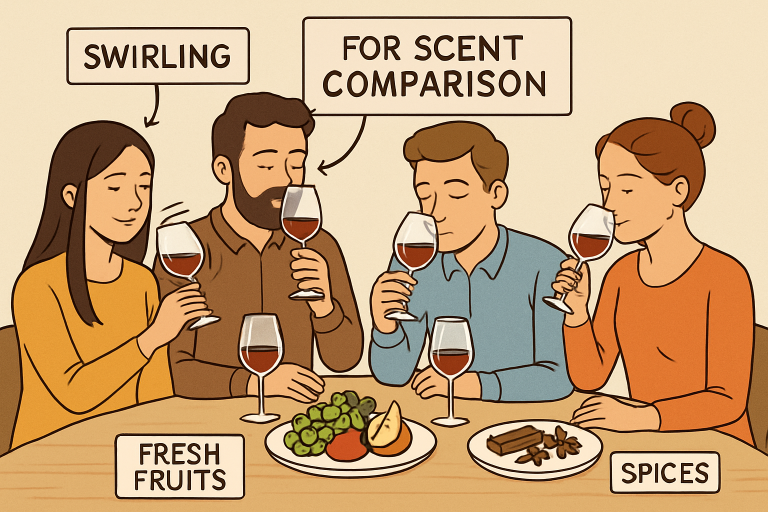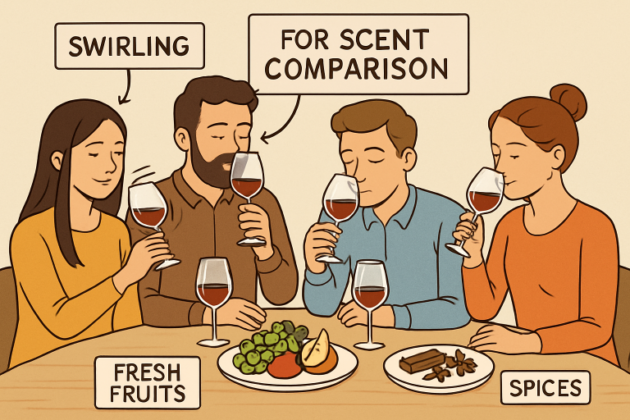Table of Contents
Introduction
Developing a refined palate for wine tasting unlocks new levels of appreciation and sensory discovery, whether you’re a wine enthusiast or just beginning your journey. By taking a thoughtful and creative approach to savoring each glass, you can recognize nuanced aromas, flavors, and textures that set each wine apart. For those interested in elevating their experience with expert guidance, exploring opportunities such as wine tasting Asheville NC, can provide hands-on education and expand your appreciation even further.
Approaching wine tasting with purpose and curiosity can transform your appreciation of every bottle. Through a mix of structured tastings, mindfulness, and community, you can accelerate your palate development and enjoy wine with newfound confidence.
Engage in Comparative Tastings
Comparative tastings, where multiple wines are sampled side by side, are fundamental to sharpening your wine senses. This approach emphasizes differences and similarities in aroma, taste, and mouthfeel, allowing your palate to learn the subtle distinctions shaped by grape type, winemaking technique, and region. For example, tasting a French Syrah next to an Australian Shiraz highlights how climate and soil can alter even the same grape. These exercises enrich your understanding of both the wine and the place it comes from.
Attend Virtual Wine Events and Workshops
With digital access to wine experts and education at an all-time high, attending virtual wine tastings and workshops is convenient and enriching. These sessions allow you to taste along with professionals, learn structured methodology, and gain practical advice that can be applied at home. Virtual education often includes recorded content and live Q&A, helping you learn at your own pace and interact with a vibrant wine community across the globe. Exploring skilled, guided sessions ensures a well-rounded experience and often introduces wines you may not encounter locally.
To further explore differences in popular sparkling wines, you can find practical guides on comparing Champagne, Prosecco, and Cava, which will help you refine your understanding of regional and stylistic variations.
Expand Your Sensory Vocabulary
A strong sensory vocabulary is key to communicating your wine experiences. Regularly expose yourself to diverse scents and flavors beyond wine—think fruits, herbs, spices, and flowers. Practice by blindfolding yourself and identifying spices or fruits by smell alone. This exercise builds a mental catalog, making recalling and describing aromas and flavors easier when tasting wine. For guidance, studying lists of familiar wine aromas from wine education resources like Wikipedia’s Wine Tasting Descriptors can deepen your descriptive abilities.

Participate in Blind Tastings
Blind tastings, where wines’ identities are concealed, strip away biases associated with labels, regions, or vintages, allowing you to focus purely on sensory perception. This objectivity sharpens your palate and helps you identify essential markers for grape variety, wine region, or quality. Host informal sessions with friends or join organized tastings at local wine bars and clubs. The challenge of blind tasting drives your senses to pick up minute characteristics that might otherwise be overlooked.
Maintain a Wine Journal
Documenting each tasting in a dedicated wine journal is a powerful strategy for developing your palate. Recording details such as color, aroma, initial impression, mid-palate structure, and finish creates a historical record of your experiences. Over time, reviewing your notes will surface patterns in your preferences and improvements in your sensory perception. This reflective habit helps you make better-informed wine selections and observe how your taste evolves.
Explore Unconventional Wine Pairings
Pairing wine with unexpected foods expands your palate and highlights unique wine characteristics. For example, a spicy Gewürztraminer served with spicy Indian food accentuates the wine’s fruitiness and balances its acidity. Experimenting with nontraditional pairings challenges assumptions, introduces you to new tastes, and fosters creativity in food and wine selection. Renowned publications such as Food & Wine offer practical pairing ideas to get you started.
Practice Mindful Tasting Techniques
Mindful tasting emphasizes full engagement with the wine experience. Follow a stepwise approach: start by visually examining the color and clarity, swirl the glass to release complex aromas, inhale deeply, then take a slow sip, letting the wine coat your entire palate. Note the initial flavors, evolving mid-palate notes, and the finish as the wine lingers. Such a focused, distraction-free method reveals intricacies you might otherwise miss and deepens your appreciation of what’s in your glass.
Join a Tasting Group
Tasting with others accelerates learning and provides diverse perspectives. Whether in local tasting groups, wine clubs, or online communities, sharing impressions and discussing wines helps solidify learning and exposes you to wines you might not otherwise try. Group tastings often feature a broader array of regions and styles, challenging your palate and expanding your wine vocabulary.
Committing to these creative methods will help you develop a keener palate and a richer curiosity about every glass of wine. Deepening your skills will add dimension to every bottle you taste, making wine appreciation not just a hobby but a lifelong journey of discovery.
